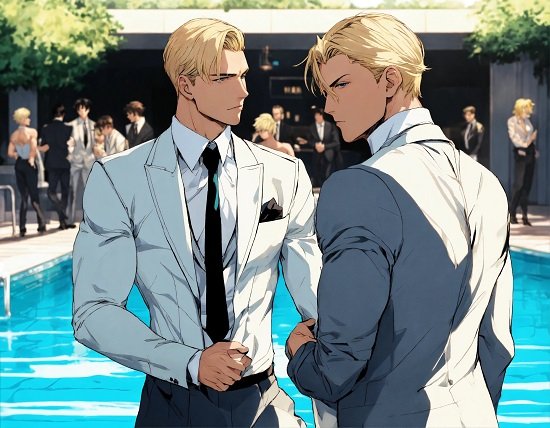Introduction
Anime has always been a medium for delving into intricate themes and concerns due to its wide variety of genres and storytelling approaches. The portrayal of LGBTQ+ characters and narratives, particularly gay characters and relationships, is one such field. A wider cultural trend towards tolerance and diversity may be seen in the increased prominence of homosexual characters in anime in recent years. This blog post will examine the portrayal, themes, and effects of homosexual Gay Anime on viewers and the industry, delving into the intriguing world of this genre.
A Brief History of LGBTQ+ Representation in Anime
The history of LGBTQ+ representation in anime is complicated, reflecting changes in the medium as well as societal views on sexuality. Explicit representations of LGBTQ+ characters in early anime were few, and those who did appear frequently played comic or stereotyped roles. But just as public perceptions of LGBTQ+ people started to change, so did the way LGBTQ+ characters were portrayed in anime. More complex portrayals of LGBTQ+ characters were presented by television shows like “Revolutionary Girl Utena” and “Cardcaptor Sakura” in the 1990s and early 2000s, which helped to advance diversity and inclusion in the media.
Breaking Stereotypes: Diverse Portrayals of Gay Characters
The dismantling of prejudices towards LGBT anime characters has been one of the biggest advances in recent years. Contemporary anime has embraced diverse and multifaceted portrayals of LGBTQ+ characters instead of relying on stale stereotypes and caricatures. Gay characters are now complex people with their own goals and challenges, no longer limited to the function of comic relief or sidekick. This change has made it possible to portray LGBTQ+ people in more genuine and sympathetic ways, which has resonated with viewers from a wide range of backgrounds.
Popular Gay Anime Series and Films
The spike in popularity of homosexual anime shows and films in recent years is a reflection of the growing acceptance of LGBTQ+ topics in mainstream media as well as the growing demand for diverse storytelling. Shows like “Yuri!!! on Ice,” which revolves around the relationship between two male figure skaters, and “Given,” which depicts the growing romance between two high school boys in a rock band, have attracted a devoted fan base and received widespread praise. In a similar vein, films like “Doukyuusei” and “No. 6” have won awards for their moving narratives and true-to-life depictions of homosexual relationships.
Themes and Tropes in Gay Anime
Gay anime covers a wide range of topics and genres, from action-packed adventures and magical romances to slice-of-life dramas and coming-of-age stories. Self-acceptance, self-discovery, and the complexity of relationships and love are common themes. In LGBT anime, tropes like the “friends-to-lovers” storyline and the “forbidden love” between two characters from different backgrounds are frequently explored, giving the tale more nuance and emotional resonance.
The Role of Yaoi and Boys’ Love (BL) in Gay Anime
Two subgenres of manga and anime that concentrate on romantic and sexual relationships between male characters are Yaoi and Boys’ Love (BL). These genres have given LGBTQ+ authors and artists a platform to explore gay themes and narratives, despite criticism for depicting unrealistic and fetishized relationships. Notwithstanding their specialised appeal, Yaoi and BL have made a substantial contribution to the exposure and acceptance of gay characters and relationships in anime through their representation.
The Impact of Gay Anime on LGBTQ+ Visibility and Acceptance
It is impossible to overestimate the influence of homosexual anime on LGBTQ+ acceptance and visibility. Anime has contributed to human sing and normal sing gay experiences by showcasing varied LGBTQ+ characters and tales, thereby addressing preconceptions and prejudices. Seeing oneself portrayed on TV can be a profoundly empowering experience for a lot of viewers, giving them a sense of acceptance and belonging in the larger LGBTQ+ community. Furthermore, homosexual anime has been essential in enlightening viewers about LGBTQ+ concerns and encouraging compassion and acceptance for queer people.
Conclusion
To sum up, gay anime is an important and developing subgenre of the larger anime industry. It may captivate spectators with its wide cast of characters, gripping stories, and subtle themes while promoting a broader understanding and acceptance of LGBTQ+ people and their lives. The representation of LGBT characters and relationships in the medium will change as it develops, adding to the diversity and inclusivity of the cultural landscape.
FAQ
What are some must-watch gay anime series?
A few well-known homosexual anime programmes are “Given,” “Yuri!!! on Ice,” “No. 6,” “Love Stage!!,” and “Doukyuusei.”
Are there any LGBTQ+ anime characters beyond gay male protagonists?
Yes, lesbian, bisexual, transgender, and non-binary characters are represented in anime as well. Diverse LGBTQ+ characters and stories may be found in television shows including “Revolutionary Girl Utena,” “Bloom Into You,” and “Wandering Son”.
Is all gay anime explicit or adult-oriented?
Many television shows and films address LGBT themes without resorting to explicit scenes or adult content, however certain gay anime, especially those classified as Yaoi or Boys’ Love (BL), may contain explicit content. It’s critical to investigate individual titles in order to locate information that aligns with your tastes.


